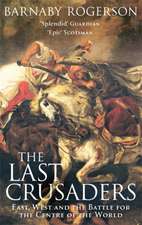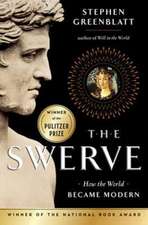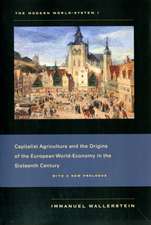Civil Wars of Peru, by Pedro de Cieza de León (Part IV, Book II): The War of Chupas: Hakluyt Society, Second Series
Editat de Sir Clements R. Markhamen Limba Engleză Hardback – 28 iul 2010
Din seria Hakluyt Society, Second Series
- 18%
 Preț: 1000.27 lei
Preț: 1000.27 lei -
 Preț: 349.80 lei
Preț: 349.80 lei - 18%
 Preț: 945.80 lei
Preț: 945.80 lei - 9%
 Preț: 934.96 lei
Preț: 934.96 lei - 9%
 Preț: 941.05 lei
Preț: 941.05 lei -
 Preț: 315.63 lei
Preț: 315.63 lei - 9%
 Preț: 934.96 lei
Preț: 934.96 lei - 9%
 Preț: 605.72 lei
Preț: 605.72 lei - 9%
 Preț: 934.96 lei
Preț: 934.96 lei -
 Preț: 286.06 lei
Preț: 286.06 lei - 9%
 Preț: 936.03 lei
Preț: 936.03 lei - 9%
 Preț: 934.96 lei
Preț: 934.96 lei - 9%
 Preț: 934.96 lei
Preț: 934.96 lei - 9%
 Preț: 934.96 lei
Preț: 934.96 lei - 9%
 Preț: 934.96 lei
Preț: 934.96 lei - 9%
 Preț: 934.96 lei
Preț: 934.96 lei - 9%
 Preț: 934.96 lei
Preț: 934.96 lei -
 Preț: 281.27 lei
Preț: 281.27 lei - 9%
 Preț: 934.96 lei
Preț: 934.96 lei - 9%
 Preț: 934.96 lei
Preț: 934.96 lei -
 Preț: 296.35 lei
Preț: 296.35 lei - 9%
 Preț: 934.96 lei
Preț: 934.96 lei - 9%
 Preț: 934.96 lei
Preț: 934.96 lei - 9%
 Preț: 934.96 lei
Preț: 934.96 lei - 9%
 Preț: 940.82 lei
Preț: 940.82 lei - 9%
 Preț: 605.72 lei
Preț: 605.72 lei - 9%
 Preț: 934.96 lei
Preț: 934.96 lei - 9%
 Preț: 934.96 lei
Preț: 934.96 lei - 9%
 Preț: 934.96 lei
Preț: 934.96 lei - 9%
 Preț: 1036.31 lei
Preț: 1036.31 lei - 9%
 Preț: 934.96 lei
Preț: 934.96 lei - 9%
 Preț: 934.96 lei
Preț: 934.96 lei - 9%
 Preț: 937.57 lei
Preț: 937.57 lei - 9%
 Preț: 934.74 lei
Preț: 934.74 lei - 9%
 Preț: 934.96 lei
Preț: 934.96 lei - 9%
 Preț: 934.96 lei
Preț: 934.96 lei
Preț: 302.10 lei
Nou
Puncte Express: 453
Preț estimativ în valută:
57.83€ • 62.83$ • 48.60£
57.83€ • 62.83$ • 48.60£
Carte tipărită la comandă
Livrare economică 21 aprilie-05 mai
Preluare comenzi: 021 569.72.76
Specificații
ISBN-13: 9781409414094
ISBN-10: 1409414094
Pagini: 434
Dimensiuni: 156 x 234 mm
Greutate: 1 kg
Ediția:1
Editura: Taylor & Francis
Colecția Hakluyt Society
Seria Hakluyt Society, Second Series
Locul publicării:Oxford, United Kingdom
ISBN-10: 1409414094
Pagini: 434
Dimensiuni: 156 x 234 mm
Greutate: 1 kg
Ediția:1
Editura: Taylor & Francis
Colecția Hakluyt Society
Seria Hakluyt Society, Second Series
Locul publicării:Oxford, United Kingdom
Cuprins
The War of Chupas by Cieza DE León; I: How the Marquis Don Francisco Pizarro went to the province of Arequipa, to found a city there, and divided the natives among the persons who would remain there as citizens.; II: How the General Lorenzo de Aldana determined to send an expedition to settle in Anzerma, a place discovered by the captain Belalcázar, and how he chose Jorge Robledo to be captain of this new settlement.; III: How his Majesty nominated Don Pascual de Andagoya to be Governor and Adelantado of the river of San Juan; and how Robledo proceeded to establish the town of Anzerma.; IV: How the Licentiate Santa Cruz sent captains and troops in pursuit of Vadillo, of the differences there were between them, and how they joined Robledo.; V: How the captain Jorge Robledo induced the Chiefs in the neighbourhood of the new city to remain at peace, and how he sent Suer de Nava to Caramanta.; VI: How the captain Jorge Robledo sent Gómez Hernández to explore the province of The Choco, and also how Ruy Vanegas went to the village of Pirsa.; VII: How the captain Jorge Robledo assigned the Chiefs among the settlers who had to remain in the city of Santa Ana, and how he departed and discovered another part of the great river of Santa Marta.; VIII: How the captain Jorge Robledo arrived in the province of Pozo, where he was severely wounded, and of the most cruel punishment that wets inflicted, also of the great quantity of human flesh that was there eaten.; IX: How the Comendador Hernán Rodriguez de Sosa came to the rock, and of the number of people he captured and killed, and of the great cruelty perpetrated on those natives.; X: How the captain Robledo discovered the province of Paucura, how the ensign Suer de Nava returned to Pozo, and how he perpetrated other cruelties worse than the former ones, and how Robledo left Paucura to explore the great and very rich province of A rma .; XI: How the captain Robledo explored the province of A rrna and fixed his camp in the village of the principal Chief | named Maytamaj and of other notable things that happened.; XII: How the captain Osorio was killed, with some other Christians, going to the new kingdom, and how the captaiti Pedro de Añasco was also killed by the Indians.; XIII: How, when the death of the Spaniards was known at Popayán, the captain Juan de Ampudia set out from thence, and how he and other Christians were killed by the same Indians.; XIV: How the Adelantado Don Pascual de Andagoya entered the cities, and was received by them as Governor.; XV: How the captain Jorge Robledo explored the province of Quinbaya, and how he founded the city of Cartago.; XVI: How the captain Jorge de Robledo left the city of Cartago and went to Cali, where he was well received, and returned as Captain and Lieutenant-General of the cities he hadfounded.; XVII: Of what passed in the city of Los Reyes, and how the Marquis Don Francisco Pizarro, with the concurrence of the Bishop Friar Vicente de Valverde, made the general repartimiento: and the departure of Gómez de Alvarado to form a settlement at Guanuco.; XVIII: How, after Gonzalo Pizarro was received as Governor of Quito, he determined to undertake the conquest of El Doradoj and of his departure from Quito.; XIX: How Gonzalo Pizarro left the city of Quito for the land of Cinnamon, which was one of the most laborious explorations that have been made in the mainland or the South Sea.; XX: How Gonzalo Pizarro left that river and went on exploring among those forests and hills without finding any large population, and how the whole party joined forces at a crossing over an arm of the Sweet Sea. 1; XXI: How Francisco de Orellana went down the rivet until he reached the Ocean Sea, and of the great sufferings of Gonzalo Pizarro and his followers from hunger.; XXII: How Gonzalo Pizarro arrived, with his followers, at a place where Indians had formerly settled but had been driven out in a war, and the Spaniards found a very great quantity of yucas, by means of which they were restored to health and their lives were saved; and of the hardships they went through.; XXIII: How his Majesty appointed Belalcázar as his Governor, and how he entered upon the government and arrested the Adelantado Andagoya.; XXIV: How the alcalde Diego Núñez de Mercado arrived in Spain with news of the death of Almagro; how his Majesty deemed that event to be art ill service, and how he appointed the licentiate Cristóbal Vaca de Castro as Judge.; XXV: Of what happened in the city of Lima, and how Pedro Alvarez Holguin left the city of Cuzco on an expedition of discovery.; XXVI: Of what happened to the President Vaca de Castro, after he left the city of Panamá to go to Peru.; XXVII: How the President Vaca de Castro was in great need and danger from being unable to find the port of Buenaventura; and how, at the end of some days during which they were seeking the port, they sighted a ship in which there came Don Juan de Andagoya, who told them where the port was.; XXVIII: How the news arrived at Lima that Vaca de Castro had reached the river of San fuan, how this was received by those of Chile, and what else happened at that time in the city of the Kings.; XXIX: How the men of Chile plotted to murder the Marquis, and how one of them named Francisco de Herencia gave notice of it at confession. Of the great heedlessness of the Marquis, and of what further happened until those of Chile went out to kill him.; XXX: How the men of Chile came forth from the lodging of Don Diego de Almagro, of the death they inflicted on the Marquis Don Francisco Pizarro, and of the valorous spirit he showed before his death.; XXXI: In which what happened is concluded down to the time when the Marquis Pizarro was murdered by the men of Chile.; XXXII: Of the things which happened in Lima after the death of the Marquis Don Francisco Pizarro.; XXXIII: Of the things that were done by the Chile party, and hovi they accepted Don Diego as Governor, also of the arrest of Antonio Picado, and how the Licentiate Rodrigo Niño and Orihuela came from Spain.; XXXIV: How Don Diego de Almagro, having tyrannically occupied the city of Lima, sent messengers to other cities of the Realm, requiring them to recognize him as Governor.; XXXV: How García de Alvarado left Lima and landed at Santa, cAptured Cabrera, and went on until he arrived at San Miguel, and of those he killed on the wayj and how the captain Alonso de Alvarado raised his standard for the king.; XXXVI: How Don Diego de Almagro wrote to Captain Alonso de Alvarado, without ktiowing that he had raised the banner, and how he sent him an appointment as Lieutenantj and of the death of Orihuela.; XXXVII: How Don Pedro Puertocarrero would not be a Lieutenant for Almagro, and how he and Gámez de Tordoya and some others quitted the city of Cuzco, also how some were grieved when they heard of the death of the Marquis.; XXXVIII: How Gómez de Tordoya and other citizens of Cuzco agreed to send messengers to the captain Pero Alvarez Holguin that, on knowing of the death of the Marquis, he should raise the banner for the King.; XXXIX: How Pero Alvarez Holguin was received as Captain-General against the party of Chile, and how Gámez de Tordoya was appointed Camp Master, and how they entered the city of Cuzco.; XL: How the Licentiate Vaca de Castro arrived at the port of Buenaventura, and wentfrom thence, with much difficulty, to the city of Cali, where the Adelantado Don Sebastián de Belalcázar, Governor for his Majesty, was staying; and of what he did there.; XLI: How the President Cristóbal Vaca de Castro left the city of Cali for that of Popayán, and how he there heard of the death of the Marquis, from Lorenzo de Aldana who came in search of him.; XLII: How Don Diego de A Imagro ordered the secretary A ntonio Picado to be tortured, believing that he would then admit that the Marquis owned sotne treasurej and how retribution was dealt to him.; XLIII: How the Captains Francisco de Chaves and Francisco Niiiiez were made prisoners, and how Francisco de Chaves was put to death.; XLIV: How, when the death of the Marquis was known at Plata, they raised the banner of the King, and how the captain Pedro Anzures, and other residents there, set out to join Pero Alvarez Holguin.; XLV: Of the things that were done by Captain Alonso de Alvarado after he had raised the banner of the King.; XLVI: How the President Vaca de Castro quitted Popayán, to go to the city of Quito.; XLVII: How the Governor Vaca de Castro on his way to Quito arrived at a village called Carangue, and there received letters from the captain Alonso de Alvarado, by which he learned that Alvarado had risen against Almagro, in the name of the King; from which news he derived great pleasure.; XLVIII: Of what else was done by the General Pero Alvarez Holguin, and how he departedfrom, Cuzco.; XLIX: How Don Diego de Almagro, hearing the news about Pero Alvarez, left the city of Lima, by the advice of his captains, and of the officers and men he took with him.; L: How the General Pero Alvarez Holguin, after he had been accepted and sworn as General near Parcos, continued his march in the direction of Jauja; and how Gaspar Rodriguez de Camporedondo, while reconnoitring the country, captured the men who were in that province on behalf of Don Diego.; LI: How Don Diego de Almagro, with his General García de Alvarado, went in pursuit of Pero Alvarez Holguin, and how, after getting near to Bombon, they turned back: also of the death of fuan de Herrada, and how Pero Alvarez continued his march.; LII: How the captain Alonso de Alvarado, on getting the news of Pero Alvarez Holguin, sent another messenger to Vacade Castro urging him to come to where the camp was with all possible speed.; LIII: How Don Diego de Almagro’s captains, being in the province of Jauja, agreed that he and no other should be General, and that Cristóbal de Sotelo should be Camp Master; and how they were for sending García de Alvarado to Lima, which was opposed by Sotelo.; LIV: How, after he had despatched messengers to many parts, the Governor Vaca de Castro resolved to leave Quito and go to join the captain Alonso de Alvarado.; LV: Of what passed in the camp of Pero Alvarez Holguin, and how the Camp Master Gómez de Tordoya and the captain Garcilaso de la Vega set out from thence and went to meet the Governor Vaca de Castro.; LVI: How the Governor Vaca de Castro ordered the Adelantado Belalcázar to return to his government, and how he was informed of Pero Alvarez having entered into Guaraz; and how, being at Motupe, Don Alonso de Montemayor and the captain Vasco de Guevara came to him there.; LVII: How the captain Pedro de Vergara spoke to the Governor Vaca de Castro about providing some relief for the soldiers who had come with him, and how the Governor arrived at Truxillo.; LVIII: How the Governor Vaca de Castro, leaving the plains, ascended from Santa by the mountain road, and how he met Gámez de Alvarado, and was annoyed on learning that he came without permission from Alonso de Alvarado; and how the Provincial, Fr. Tomás de San Martín, also arrived.; LIX: How the Governor Vaca de Castro held a review of the Spaniards who were with him, and how he sent the captain Lorenso de Aldana, and also Diego Maldonado, to the camp of Pero Alvarez.; LX: How it became known at Guaraz that Vaca de Castro was in the camp of Alonso de Alvarado, and how Captain Castro went thither, and of Vaca de Castro’s going to Guaraz and taking command of the troops there, and of what else happened.; LXI: How the captain Pero Alvarez Holguin felt somewhat aggrieved because the standard he had presented was not displayed, and there was even some commotion; and how Vaca de Castro again made public the decree of His Majesty that he held, and requested, by virtue of it, that he be acknowledged as Governor.; LXII: How, when Don Diego de Almagro arrived at the city of Guamanga, Martín Carrillo, his Camp Master, killed Balt anas; and of his departure from Guamanga for Cttzco, and how he supplied himself with arms, and constructed artillery.; LXIII: Of what further happened in the city of Cuzco, of the speech Don Diego made to his companions; and of what García de Alvarado did.; LXIV: How the captains García de Alvarado and Saucedo went to ask Cristóbal de Sotelo to pardon the soldiers he had in prison, and of their fate; and of what else happened until García de Alvarado killed the good knight Cristóbal de Sotelo.; LXV: Of the concern shown by Don Diego and many of the Chile party at the death of the captain Cristdbal de Sotelo; and of how García de Alvarado and others fortified themselves in his quarters, and Don Diego wanted to attack them there.; LXVI: How Don Diego de Almagro gave Sot elds troop to Diego Méndez, and how García de A Ivarado was killed, and Cristóbal de Sotelo avenged, at his hands.; LXVII: In which the preceding chapter is concluded, down to the death of García de A htarado.; LXVIII: How the Governor Vaca de Castro decided to send his army to the province of Jauja, while he himself went to Lima.; LXIX: Of what Vaca de Castro did in Lima, of the arrival of the captains at Jauja, and how Pedro Anzures went to San Miguel.; LXX: How Don Diego de Almagro, after the death of García de Alvarado, determined to prepare for departiire from Cuzco; how he sent one Juan de Aguirre ivith ten other mounted men to reconnoitre, and how they were taken and killed.; LXXI: How Don Diego de Almagro and his followers quitted the valley of Xaquixaguana and set out for the Apurimac bridge, and how they thought of withdrawing to the Collao.; LXXII: How the Governor Vaca de Castro quitted the province of Jauja for the city of Guamanga, where the captain Diego de Rojas then was.; LXXIII: How Ididquez arrived at the camp of Vaca de Castro to treat for peace just when the Governor wanted to send messengers to Vilcas.; LXXIV: How Vaca de Castro, notwithstanding that he had entered into these negotiations, sent Alonso Camarilla as a spy to the camp of Don Diego, with letters to tnany who were there, and how he was captured by Juan Diente when scouts were sent out from Vilcas, and on confessing what he went for, was put to death.; LXXV: How the messengers returned to the camp at Vilcas, no way being found that could lead to peace, so that they had to trust to arms for the defence of their cause.; LXXVI: How the messengers arrived at the camp of Vaca de Castro, how it was learnt that Don Diego had left Vilcas, how Pedro Anzures went to reconnoitre; and how the opposing forces approached to give battle, each leader animating his men and exhorting them to fight.; LXXVII: How the captains Castro and Pedro Anzures went out to reconnoitre, and how the royal army advanced to give battle, each captain encouraging his men and exhorting them to fight.; LXXVIII: Of the cruel battle between Vaca de Castro and Don Diego de sllmagro, and how the men of Chile were routed and defeated with the loss of many lives, and their party for ever utidone.; LXXIX: How, after the battle, the Governor ordered the wounded to be tended, and had Gcmez de Tordoya carried to Guamanga; how retribution was inflicted on the conquered, and how Gámez de Alvarado, being ill, died at Vilcas, and was taken to be buried at Guamanga.; LXXX: Of things that were done by the Governor Vaca de Castro, and how he despatched some captains to undertake conquests in the Realm.; LXXXI: Of the things that happened to Gonzalo Pizarro until he came safely out of the Canela expedition and arrived at the city of Cuzco.; LXXXII: How Garcilaso de la Vega arrived in Cusco; of the imprisonment of Don Diego, and how Vaca de Castro travelled to that city.; LXXXIII: Of the things that were done in the city of Cuzco by the Governor Vaca de Castro, and of his great avarice and vainglory.; LXXXIV: How Don Diego, when he was in prison, tried to escape, and how he was beheaded by order of the Governor Vaca de Castro.; LXXXV: Of other things that were done by the Governor Vaca de Castro, and how he appointed Diego de Rojas and Felipe Gutiérrez to be his captains in the subjugation of the region of the Rio de la Plata.; LXXXVI: How the Governor, Vaca de Castro, parcelled out the lands, and how the Captain Gonzalo Pizarro arrived at the city of Lima and talked openly about affairs.; LXXXVII: How they discovered great deposits of gold in the river Caravaya, how Vaca de Castro ordered all the old tambos and lodgings to be occupied, and of the departure of Pedro Anzures and Francisco Becerra for Spain.; LXXXVIII: How the captain Gonzalo Pizarro arrived at the city of Cuzco, accompanied by some followers, but had not laid aside his rebellious design of occupying the Realm; and of what else happened.; LXXXIX: How the captains Felipe Gutiérrez and Diego de Rojas set out from Cuzco on their expedition of conquest.; XC: How the General, Felipe Gutiérrez, and the Camp-master set out from Cuzco, and how Diego de Rojas went to explore in the direction indicated by the Indians.; XCI: Of what else happened to the captain Diego de Rojas.; XCII: How Felipe Gutiérrez came to join Diego de Rojas; of the arrival of Francisco de Mendoza at Chiquana, and what else happened.; XCIII: How the natives of those provinces concealed the provisions, and of the want that, it was believed, would be the consequence; also how Diego de Rojas sent messengers to Felipe Gutiérrez.; XCIV: How, after the captains were united, they determined to go forward; how they suffered much from thirst, insomuch that many of their servants perished, yet how they went on exploring.; XCV: How the bachelor, Juan Vélez de Guevara, arrived at Lima, where the municipality would not receive him; and of the departure of the accountant Juan de Cáceres for Panamá.; XCVI: How the Indians who escaped from the hands of the Spaniards returned to take counsel, and resolved, with much boldness, to go forth again and fight them, and of the death of Diego de Rojas.; XCVII: How Pero López de Ayala discovered the river Soconcho, found a well-peopled region, and returned to where the general Felipe Gutiérrez was, and how they all set outfor that region.; XCVIII: How the General, Felipe Gutiérrez, pursued his exploration down the river of Soconcho, and what else happened.; XCIX: How, when the news of the Marquis Pizarro’s death reached Spain, it was ordered that a Viceroy and an Audiencia should be appointed; and of the conference over the Ordinances which were issued for the government of the new empire of the Indies.; C: How, as soon as they had drawn up the Ordinances, they sent them to most parts of the Indies; how in some places great resentment was shown, while in others there were no slight disturbances, and how in the city of Lima the Municipality despatched the alcalde Palomino and Don Antonio de Rivera to apprise Vaca de Castro of it.; CI: Of what further took place between the captains, Felipe Gutiérrez and Francisco de Mendoza, and how, after having explored some provinces down the river, Felipe Gutiérrez was arrested by Francisco de Mendoza.; CII: Of other things done by Francisco de Mendoza, and how he sent to- arrest Nicolás de Heredia and sent Felipe Gutiérrez away.; CIII: How his Majesty the Emperor, our Lord, ordered Blasco Nuñes Vela to proceed as Viceroy to the Realms of Peru, to give effect there to the new laws that had been enacted for the government of the empire of the Indies.; CIV: How the Alcalde Alonso Palomino and Don Antonio de Rivera arrived at the city of Cuzco, and what happened.
Descriere
This forms part of the original Book II of Cieza's 'Civil Wars of Peru', translated and edited. For other sections of the same source, in volumes variously titled, see Second Series 31 and 54. This is a new print-on-demand hardback edition of the volume first published in 1918.














